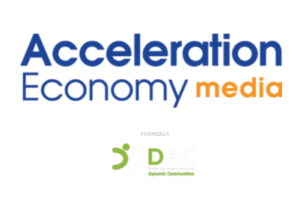Takeaways from the Inaugural Summit North America Road Show
-
Takeaways from the Inaugural Summit North America Road Show
TLDR: Roadshow Summit (Tampa) was good!
The first of several one day free conferences sponsored by the Dynamics Communities user group was held on Wednesday, 2/21/24 in Tampa. They plan on having one event every month in different cities across the nation and hope to host them from Microsoft offices in the future. I was given the honor of being the very first to register by simple happenstance of standing near the registration table when it opened. Robb Delprado made sure to loudly point that out to the group of over 100 participants that attended the event. The event offered several educational sessions across the Microsoft Dynamics products: Business Central, Finance and Operations, GP, and Power Platform in addition to some general sessions. There were also several networking times set aside which I used to meet with Robb Delprado and Steve Chinsky, along with other Florida based customers and developers and discussed various aspects and functionality of the Business Central product. I’m always torn between the BC, CRM, and Power Platform tracks, so couldn’t attend all sessions, but here is my summary of the sessions I did.
Co-Pilot Keynote
The initial session was regarding Microsoft Co-Pilot. If you’ve been living under a rock and haven’t heard about it, this is Microsoft’s implementation of a natural language based Artificial Intelligence. Co-pilots are being deployed for virtually every Microsoft product to assist with tasks related to that product. Some co-pilots write code, others can analyze customer data. An example was shown where customer sales data was analyzed to recommend alternate products to customers that were similar to their current most frequently purchased products. An important distinction with Microsoft co-pilot when compared with other services like Chat GPT is that the Microsoft services does not expose AI queries nor data to the model engine, and any data generated is deleted shortly after creation. If you were to upload customer sales data to a model like ChatGPT, then this customer data would be publicly exposed and can be queried publicly, since it is used to add to the model.
Financial Reporting and Dimensions
This session showed the usage of Business Central Analysis views for quickly tying dimensions to many different financial reports. Row and column layouts can be set to an analysis view to quickly add dimension details to reports. An example was presented where sales regions (used as a dimension) were added to a balance sheet financial report. This was created as a new report, and opened the possibility of having multiple versions of financial reports that are sliced and diced for whatever dimension you want to analyze. There is a drawback to this exciting functionality that can potentially have severe performance impacts to other BC operations. The BC Analysis views have an ‘update’ function which runs the dimensional queries and stores the results. Many in the room agreed that doing this frequently during business hours or done incrementally ‘on posting’ would slow down the system, so it was suggested that the BC job queue functionality could be scheduled to run these on a custom schedule after hours.
Power Automate Tips and Tricks
This session was presented by Mary Meyer, the same person that presented they co-pilot keynote. The audience voted whether to see a canned power-point or go directly to Power Automate and view some raw and unscripted demos directly on the platform, so the obvious decision was the demo. She demonstrated the Power Automate co-pilot which left a bit to be desired when building a complete flow. The co-pilot framework did have some useful changes in the way the options for each step were prompted, making it a little more user friendly. She suggested using the ‘scope’ step to contain groups of complex logic, which is a very useful technique to be sure. Some other useful suggestions were to write down the logic steps of a flow before starting, and to use co-pilot to ask ‘what does this flow do’ to produce documentation about the functionality accomplished with a flow. I asked her about some life cycle issues in Power Automate, specifically some steps (i.e. SQL) that have both a connection and a configurable data source name, and the difficulties with moving those steps from a development to a production environment. She didn’t have a solution, but suggested a person that I should follow up with.
Sales and Use Tax
This session was presented by Ron Aiken from a company called Wolters Kluwer, a company that has a sales and use tax module that deploys as an extension to Business Central. It was a little more salesy than the other sessions, but it seems to be a great product with a lot of functionality. It calculates sales tax and also performs sales and use tax filings that we have to do monthly. There were a few others in the room that were in the construction field and had similar taxation issues with our own. It handles tax calculations based on latitude/longitude for locations where an address is not available; $5K county tax limits, and also has functionality that will verify tax calculations from A/P invoices received from outside vendors.
BC Security
This was an eye-opening session that was not a how-to, but more of a cautionary tale of risk and financial controls. He first discussed a few interesting cases of fraud from large multi-million-dollar embezzlement events to smaller dollar amount incidents that were all due to some flaw in the way financial controls were implemented. One more memorable story was about a person that worked for a company for 1 day before being fired. In that one day, they learned that the company did not regularly reconcile their bank accounts, and proceeded to write themselves payroll checks for the next two years. He recommended that BC permission sets for a new deployment be initially copied from an out of the box role, then ‘torn apart’ and made into a custom permission set that is fully understood. An alternative is to use a recording feature in BC that produces a security role based on the features that are used while recording a complex accounting task. Thankfully, security profiles can also be configured in BC by exporting or importing the configuration from a spreadsheet. He said there were some interesting trends in that in general, the higher a person is in the organization, the fewer permission they should have. A trend now is that a controller would have read-only access for everything, but not have the ability to change configuration or enter any data. Another trend is to have master records and transactional records entered by different departments. i.e. a vendor would be created by the A/R department, while vendor payment transactions would be entered by the A/P department. Another helpful security feature that can be used in BC are change logs, which record individual changes to records and fields. The change logs should be carefully configured so as not to impact performance. Another concept the speaker mentioned was regarding having people able to provide backup for vacation or sick coverage. He pointed out that special access was needed not 365 days per year, but only a week or 2 when that access was needed.
Bulk Messaging Using Word Templates
It was a crazy coincidence that I met the presenter of this session during the first networking period. He turned out to be from Romania and had worked for several large Canadian and US ERP companies (Columbus, Enavate, RSM). He presented a session on Word Templates that can be implanted by an end user, which are different from BC reports, which also use Word Templates, but require a developer to customize and configure. Word templates seem to be a little more useful for creating marketing messages, but he also presented functionality where a spreadsheet was included in an e-mail. This may open some possibilities that we could e-mail spreadsheets along with invoices for complex reconciliation with customers.
Takeaways
I think the free one-day conference experiment is a success. Being able to shake hands with some of the national folks alongside local customers and solution partners helps to see how others have solved their business problems, and how those solutions can also be applied to our problems. I received great educational value from the content of the sessions, and it also opened several new networking contacts which I’m sure will pay dividends in the future. While Tampa was not exactly just around the corner, it was worth the trip.
We are just scratching the surface on the ways that dimensions can be easily incorporated into our accounting practices. As we learn more about the ways it can be implemented to pull information out of data, I foresee that this will be just the first of many functionality improvements we’ll see in BC that are not available in our current ERP.
While I primarily seek out technical content at conferences, the security session really made me think about some best practices and high-level business controls that we need to consider. The conference was another reminder of the value of the user community in charting a course through the technical and procedural landscape of today’s information technology.
The discussion ‘Takeaways from the Inaugural Summit North America Road Show’ is closed to new replies.





